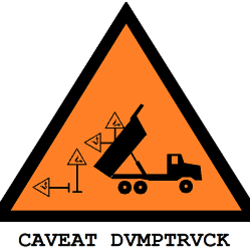I found this aphorism in my book of Korean aphorisms. I’ve been neglecting this long-standing blog-habit of posting Korean aphorisms with my amateur efforts at translation. So here is a resumption… we’ll see how long that lasts.
돌로치면 돌로치고 떡으로 치면 떡으로 친다
dol.lo.chi.myeon dol.lo.chi.go tteok.eu.ro chi.myeon tteok.eu.ro chin.da
stone-WITH-hit-IF stone-WITH-hit-CONJ rice-cake-WITH hit-IF rice-cake-WITH hit-PRES
If hit with a stone, hit [back] with a stone, and if hit with a rice cake, [one] hits [back] with a rice cake.
This is in the same vein as “An eye for an eye, and a tooth for a tooth.” The grammar is pretty straightforward, though I’m always puzzled by the inconsistencies of spacing in Korean texts – basically I think people are allowed to make it up as they go: e.g. the first clause has the indirect object “with a stone” attached to the verb (no spacing), while the second clause has a space between the indirect object and the verb – with the same verb! What’s the rule? I have no idea. Anyway historically Korean had no spaces between words. So run-on text is the default, and any introduction of spaces between “words” is post hoc and without longstanding tradition.


